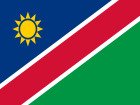Namibia became the 10th member of the Southern African Development Coordination Conference (SADCC) following its independence in March 1990, after more than 70 years of South African occupation. This was the culmination of a protracted war by the Namibian people and an international campaign of relentless pressure from SADCC, the OAU and the United Nations. The Founding President Dr Samuel Shafiishuna Nujoma signed the instrument of accession to SADCC on behalf of the Republic of Namibia on 24 August 1990 just prior to the 10th SADCC Summit hosted by Botswana on 26 August 1990.
SADCC transformed into the Southern African Development Community (SADC) in 1992 when independent Namibia hosted the signing of the SADC Treaty by 10 Member States at the 12th SADC Summit in Windhoek on 17 August 1992 hosted by the country’s Founding President, Dr Samuel Shafiishuna Daniel Nujoma, and chaired by President Sir Quett Ketumile Joni Masire of Botswana.
Namibia is situated on Africa’s south-western seaboard. Its neighbouring countries are Angola to the north, Botswana and Zimbabwe to the east and South Africa to the south. The country is bordered by the Atlantic Ocean in the west. The system of government is multi-party democracy, with checks and balances exercised through the state organs of the executive, legislative and judiciary. General, presidential, regional and local elections are held every five years.
Please refer to the latest SADC Statistics Yearbook

